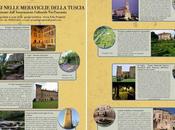
Nella poesia “Madonna mia”, dove ritroviamo l’immagine del giglio (come anche in “Ave Maria Gratia Plena) abbiamo un chiaro esempio di stilnovismo preraffaellita.
“And login eyes half veiled by slumberous tears
Like bluest waters seen through mists of rain”
…
“And white Throat, whiter than the silvered dove,
Through whose wan marble creeps one purple vein.”
In “Ave Maria Gratia plena” l’immagine della Madonna inginocchiata, “ a kneeling girl with passionless pale face” ci rimanda a un concetto estetico, grazioso, della religione. Tutta la scena è senza passione, un atto di pura bellezza.
Wilde tende a confondere l’etica con l’estetica e la chiesa cattolica attira l’estetismo inglese perché fa appello ai sensi, fra paramenti, icone, inni e snervanti odori d’incenso.
Si richiama a Shelley, a D’Annunzio e ai quadri di Whistler, il quadretto in giallo
“In the gold room”, con immagini impressioniste e corrispondenza fra suoni e colori.
Her ivory hands on the ivory keys
Strayed in a fitful fantasy,
Like the silver gleam when the poplar trees
Rustle their pale leaves listlessly,
Or the drifting foam of a restless sea
When the waves show their teeth in the flying breeze
Her gold hair fell on the wall of gold
Like the delicate gossamer tangles spun
On the burnished disk of the marigold
Or the sunflower turning to meet the sun
When the gloom of the jealous night is done
And the spear of the lily is aureoled.
And her sweet red lips on these lips of mine
Burned like the ruby fire set
In the swinging lamp of a crimson shrine,
Or the bleeding wounds of the pomegranate,
Or the heart of the lotus drenched and wet
With the spilt out blood of the rose-red wine
continua…






